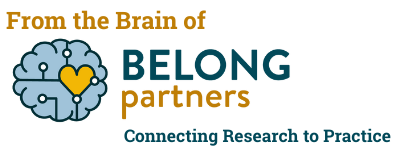
According to a new advisory from the U.S. Surgeon General, a lack of social connection can increase the risk for multiple negative health outcomes. And among individuals in the US, there is a troubling trend of severe loneliness. Even before the COVID-19 pandemic, there were concerning levels of isolation among adults living in this country. The weakened social connections young people and adults are experiencing can be attributed to several factors including – lagging social skills in the wake of COVID-19 isolation, an increase in screen time, and the individualistic culture in the United States.
As we collectively work to recover from the aftermath of the COVID-19 pandemic, another epidemic is on the rise: loneliness.
Lack of Connection and Loneliness – and Online Friendships are Not the Same
According to NPR, there are distressing repercussions of this widespread loneliness, including:
- a 29% increased risk of heart disease;
- a 32% increased risk of stroke;
- and a 50% increased risk of developing dementia for older adults.
The Surgeon General’s public health advisory reported that the impacts are most pronounced in young people aged 15-24, who had 70% less social interaction with their friends. Many young people turned to technology to find community online during the pandemic. But online friendships simply do not nourish us as much as in-person connection. Based on the negative mental and physical health impacts of loneliness, we need to take action to rebuild communal and social connections.
The Role of Schools in Building Community Connections
At BELONG Partners, we believe schools have a crucial role to play in cultivating social connections. As communal connections decline, the schoolhouse is one of the only consistent in-person gathering spaces left for young people. Given the rise in youth suicide and the severe mental health crises of the last few years, lack of community is an emergency.
Mental health concerns for adults are also at record highs, contributing to tension in schools when dysregulated adults encounter struggling young people.
Schools have a responsibility to create more inclusive environments for all community members. People with marginalized identities, such as people of color, multi-language learners, neurodivergent folks, and LGBTQ+ folks (not an exhaustive list) all experience higher rates of social isolation.
Prioritizing What Decreases Isolation and Combats Loneliness
Efforts that increase a sense of community at school include prioritizing social-emotional learning and increasing access to counseling and mental health support for students and educators, and emphasizing collaborative, team-based learning. When young people know they matter and belong, and their voice is valued at school, they are naturally more connected. Providing opportunities for multiple young folks to practice relationship skills, such as small group social-emotional learning, is also an effective way to rebuild healthy community ties in schools.
We know that building community in schools improves mental and physical health outcomes for students and educators and increases a sense of belonging throughout the school community. Research also shows that positive student-educator relationships reduce discipline referrals and increase student buy-in to learning.
We can combat loneliness and isolation by prioritizing social-emotional learning in our school communities. Humans are social by nature, and the latest science tells us that deep social relationships help us live longer, happier, healthier lives.
Check out our Services page for more information about how we work with schools and community organizations.
Research cited in this article includes:
Social Connection — Current Priorities of the U.S. Surgeon General. (n.d.). Www.hhs.gov. https://www.hhs.gov/surgeongeneral/priorities/connection/index.html
America has a loneliness epidemic. Here are 6 steps to address it. (2023, May 2). NPR. https://www.npr.org/2023/05/02/1173418268/loneliness-connection-mental-health-dementia-surgeon-general
NPR. (2023, May 3). Why the U.S. surgeon general says feeling lonely could lead to an early death. NPR; NPR. https://www.npr.org/2023/05/03/1173612050/why-the-u-s-surgeon-general-says-feeling-lonely-could-lead-to-an-early-death
Youth Suicide Rates Increased During the COVID-19 Pandemic. (2023, May 22). National Institute of Mental Health (NIMH). https://www.nimh.nih.gov/news/science-news/2023/youth-suicide-rates-increased-during-the-covid-19-pandemic
Macmillan, A. (2022, November 29). Mental Illness Is On the Rise in the U.S. for a Frustrating Reason. Health.com. https://www.health.com/condition/depression/8-million-americans-psychological-distress
Harris, A. (2019, January 3). How to Turn Schools Into Happier Places. The Atlantic. https://www.theatlantic.com/education/archive/2019/01/restorative-practices-school-climate/579391/
